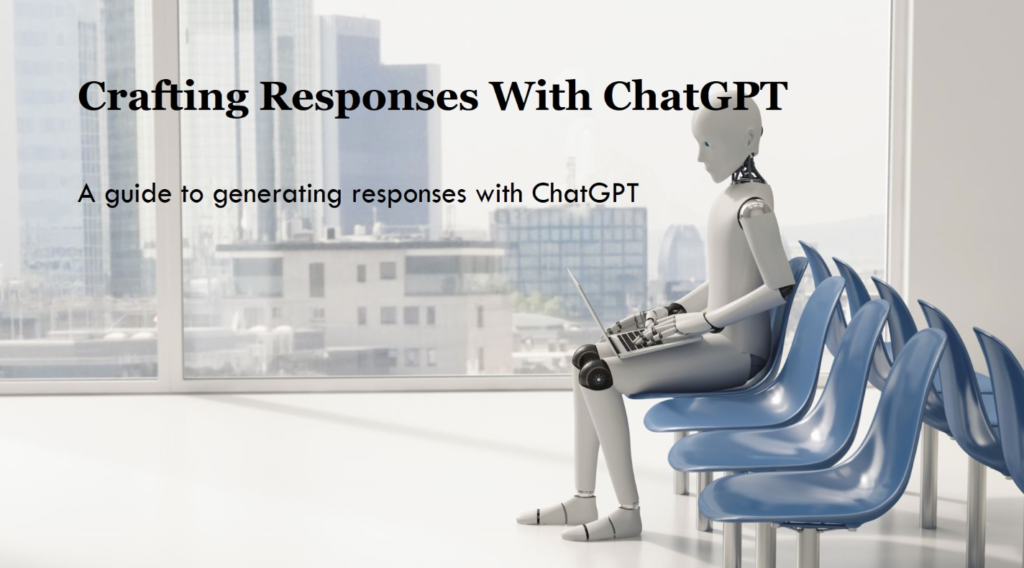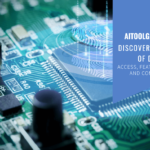ChatGPT is an advanced AI chatbot leveraging the Generative Pre-trained Transformer (GPT) architecture.
It uses Natural Language Processing (NLP) and machine learning to generate human-like text responses based on user prompts.
The core technology behind ChatGPT involves training on vast datasets comprising text from books, websites, and other written material to understand context and syntax.
This training is divided into two main phases: pre-training, where the model learns language patterns, and fine-tuning, where it is optimized based on specific tasks and user interactions.
The latest iterations, such as GPT-4, are multimodal, and capable of processing text, images, and audio, enhancing its versatility.
ChatGPT’s applications range from answering questions and drafting emails to coding assistance and creative writing, making it a powerful tool for various tasks.
OpenAI continues to refine ChatGPT by incorporating user feedback, ensuring continuous improvement in its conversational abilities and accuracy.
Core Technology Behind ChatGPT
Generative Pre-trained Transformer (GPT)
The core technology behind ChatGPT is the Generative Pre-trained Transformer (GPT) architecture, developed by OpenAI.
GPT models, including GPT-3.5, GPT-4, and GPT-4o, are designed to understand and generate human-like text.
Each version represents a significant advancement in capabilities, with GPT-4 surpassing GPT-3.5 in reasoning and problem-solving abilities.
For instance, GPT-4 scores higher in various standardized tests, such as the Uniform Bar Exam and the Biology Olympiad, showcasing its improved performance and broader general knowledge.
Training Phases
Pre-training Phase
The training of GPT models follows a two-stage process: pre-training and fine-tuning. During the pre-training phase, the model is exposed to a vast corpus of text data from the internet.
This unsupervised learning process involves the model predicting the next word in a sentence, thereby learning grammar, facts about the world, and some reasoning abilities.
For example, GPT-3 was trained on 45TB of compressed plaintext, which is equivalent to roughly 6.5 million document pages.
This extensive dataset enables the model to recognize patterns and generate coherent text based on the input it receives.
Inference Phase
In the inference phase, the pre-trained model generates responses to user inputs in real time.
When a user provides a prompt, the model tokenizes the input, breaking it down into smaller units called tokens.
It then uses its learned patterns to predict and generate the most likely sequence of words that follow.
This process involves several layers of attention mechanisms, which allow the model to focus on different parts of the input text and maintain context across longer conversations.
For instance, GPT-4’s multimodal capabilities enable it to accept both text and image inputs, further enhancing its interactive potential.
Training and Fine-Tuning
GPT models are fine-tuned using a combination of supervised learning and Reinforcement Learning from Human Feedback (RLHF).
During supervised learning, the model is trained on a dataset with human-provided responses, refining its ability to generate accurate and contextually appropriate answers.
RLHF involves collecting feedback from human users and using it to adjust the model’s behavior, making it more aligned with human values and reducing the likelihood of generating harmful or biased content.
Applications and Impact
The advancements in GPT models have led to their deployment in various applications, from content creation and customer service to programming assistance and educational tools.
For example, GPT-4 has been used by organizations like Duolingo for language learning and Stripe for improving user experience and combating fraud.
Despite their impressive capabilities, GPT models still face challenges, such as handling adversarial prompts and addressing social biases.
OpenAI continues to work on these limitations, aiming to make future versions even more reliable and useful.
How ChatGPT Generates Responses?

Tokenization and Pattern Recognition
ChatGPT begins the text generation process with tokenization, which involves breaking down user input into smaller units called tokens.
These tokens can be as small as individual characters or as large as whole words or subwords.
For instance, the word “unhappiness” might be tokenized into “un,” “happi,” and “ness”.This tokenization is crucial because it allows the model to process and analyze text in manageable pieces.
The model uses a tokenizer library, such as OpenAI’stiktoken, to perform this task efficiently.
By analyzing the relationships between these tokens, ChatGPT can identify patterns and generate coherent responses based on the learned data.
Contextual Understanding
Maintaining context is vital for generating relevant and coherent responses, especially in multi-turn conversations. ChatGPT uses a context window to keep track of recent tokens, which includes both user inputs and the model’s previous responses.
The size of this context window is a key factor in how well the model can maintain context; for example, GPT-3.5 has a token limit of around 4,000 tokens, while GPT-4 can handle approximately 8,000 tokens.
By considering all tokens within this window, the model can generate responses that are contextually appropriate and relevant to the ongoing conversation.
However, it’s important to note that the model does not have memory beyond the current session, meaning it cannot recall past interactions once the session ends.
Dialogue Management
Managing multi-turn conversations is another critical aspect of ChatGPT’s functionality. The model appends each new user input and its corresponding response to the conversation history, which helps it maintain a natural dialogue flow.
This approach ensures that the model can reference previous exchanges to provide more coherent and contextually relevant responses.
For example, if a user asks a follow-up question, the model can use the previous interactions stored in the context window to generate a suitable reply.
This method of dialogue management allows ChatGPT to simulate a more human-like conversational experience, making it effective for applications like customer service and interactive chatbots.
People Also Ask Questions
How does ChatGPT generate responses?
ChatGPT generates responses by analyzing the input text, breaking it down into tokens, and predicting the next word based on patterns learned during its training phase.
What is the difference between ChatGPT and traditional chatbots?
Traditional chatbots operate on predefined rules and decision trees, while ChatGPT uses generative AI to produce unique, contextually relevant responses, making interactions more dynamic and human-like.
Can ChatGPT understand and remember the context in conversations?
Yes, ChatGPT can maintain context over multiple exchanges, allowing it to provide coherent and relevant responses throughout a conversation.
What are the limitations of ChatGPT?
ChatGPT’s limitations include reliance on training data, the potential for generating incorrect responses, and lack of awareness of recent events or updates.
How is ChatGPT trained?
ChatGPT is trained using a deep learning process on large datasets of text, allowing it to recognize patterns and generate responses based on the context of the input.
What are the applications of ChatGPT?
ChatGPT is used in various applications, including content creation, customer service, programming assistance, and more.
- Guide to Connect Claude AI with Google Sheets in 2024 - October 11, 2024
- What is DreamGF? Honest review by Expert - October 9, 2024
- How to Use Claude AI in 2024? - October 7, 2024






